When it comes to improving the air quality in your home and ensuring a comfortable environment, you might find yourself pondering the choice between an air purifier and a ceiling fan. While both have their uses and benefits, it’s important to understand the differences and similarities between them. In this piece, I’ll help you break down the differences between air purifiers and ceiling fans, assisting you to make an informed decision based on your requirements.
Contents
What is An Air Purifier?
An air purifier is designed to do exactly what its name means, i.e., cleaning the air, and purifying the air in your home. It works by drawing in air and passing it through various filters, such as pre-filters, HEPA filters, and activated carbon filters. Each filter has its specific purpose These filters capture and remove contaminants like dust, pollen, pet dander, smoke, and even some bacteria and viruses. The result is cleaner and healthier air for you to breathe.
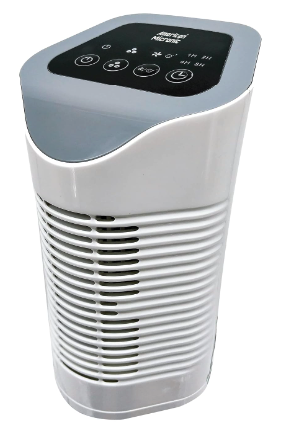
Here is how the filters work:
Pre-Filters
Pre-filters are like the first line of defence in an air purifier. It is the first stage of filtration of air among many stages. Pre-filters work by first capturing the bigger stuff in the air, like dust, pet hair, and large particles. By doing this, they protect the more delicate filters inside the purifier and make them last longer.
HEPA Filters
HEPA stands for “High-Efficiency Particulate Air.” These filters are good at catching tiny things in the air, even things you can’t see, like pollen, mould spores, and some types of bacteria. The filter’s insides work like a super-fine net, it traps these tiny particles and prevents them from going back into the air. The remaining clean air then passes to activated carbon filters that treat odour.
Activated Carbon Filters
These filters are like little sponges for bad smells and chemicals. They have a special kind of carbon that can soak up things like odours, smoke, and harmful gases. So, if you have a smelly room or there are chemicals in the air, these filters can help make the air fresher and safer to breathe.
In simple terms, pre-filters catch the big stuff, HEPA filters catch the very tiny stuff, and activated carbon filters soak up bad smells and chemicals. All together, they work to clean the air in your home and make it better for you to breathe.
Ceiling Fan
On the other hand, a ceiling fan’s purpose is to circulate air in a room. It does this by spinning its blades, creating air movement that can help you feel cooler, especially during warm days. The airflow produced by a ceiling fan doesn’t clean the air or remove contaminants but focuses on providing comfort by creating a breeze. Its sole intent is that with a regulator adjusting to various speeds it can provide comfort to you in extreme heat by moving the air.
Air Purifier vs Ceiling Fan Difference
| Feature | Air Purifier | Ceiling Fan |
| Main Function | Improves air quality by removing contaminants | Regulates room temperature by circulating air |
| Purification Process | Uses filters to trap and remove pollutants | Does not have a filtration system |
| Contaminant Removal | Effectively removes dust, allergens, smoke, and pollutants | Does not have the capability to remove contaminants |
| Cooling Effect | Does not provide a cooling effect | Provides a cooling sensation through air circulation |
Air Quality vs. Temperature
The fundamental difference between these two appliances lies in their primary functions. An air filter, like an air purifier, focuses on air quality. It works to make the air cleaner and safer to breathe. It captures things like dust, pollen, and even tiny particles you can’t see, which can be harmful to your health. It’s like having a superhero that keeps the air in your room fresh and healthy. Air purifiers use filters to trap contaminants, while ceiling fans do not have any filtration system. Air purifiers are effective at removing dust, allergens, smoke, and pollutants from the air,
A fan, on the other hand, moves the air inside the room evenly in all spaces if placed in the middle. It doesn’t clean the air but moves it around. When the air is hot, a fan helps make you feel cooler by blowing the warm air away and allowing your skin to cool down. When it’s cold, a fan won’t make you warmer, but it can help distribute warm air more evenly, making the room feel more comfortable. So, a fan’s main job is to help you feel just right in terms of warmth or coolness. Ceiling fans provide a cooling sensation through air circulation, making them suitable for hot weather. Air purifiers do not have a cooling effect.
Can They Work Together?
Running both an air purifier and a ceiling fan together is possible, but it’s important to understand the consequences. Ceiling fans create positive air pressure, which can force more airborne contaminants into the room, making your air purifier work harder. This may lead to quicker filter clogging and reduced air purification efficiency. If you want to use both appliances together, consider operating them separately, and ensure that your air purifier’s filters are clean and well-maintained.
FAQ
Can I use an air purifier as a fan?
You cannot for the most part. If you want you need to sit near the air purifier that blows out clean air which is quite low compared to a fan.
Should I run a ceiling fan with an air purifier?
You should not use both appliances as Fans move the air from outside bringing in more pollutants and Purifiers have to work more to treat the impurities.
Does a fan improve air quality?
They cannot improve air quality because they do not possess any filtering qualities. Using a fan makes the pollutant spread more in the room as it moves the air.
Conclusion
In the battle of air purifiers vs. ceiling fans, the choice depends on your needs. If you’re looking to improve air quality and reduce allergens in your home, an air purifier is the way to go. However, if your main concern is maintaining a comfortable temperature, a ceiling fan is the better choice. While using both simultaneously is feasible, it’s essential to be mindful of issues that come up. To ensure optimal performance from each appliance you need to run them separately. In summary, these two devices serve different purposes, but they can complement each other when used properly, providing you with a healthier and more comfortable living space.

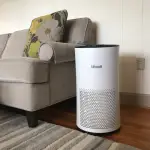
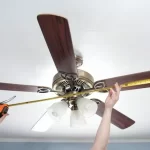
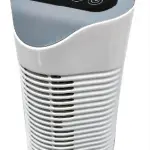
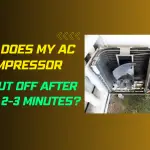


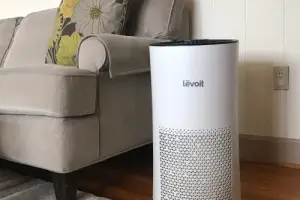
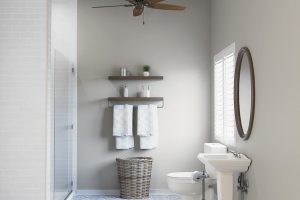
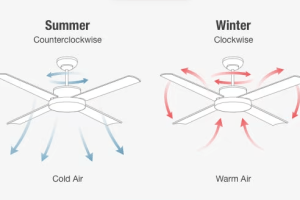
Add Comment